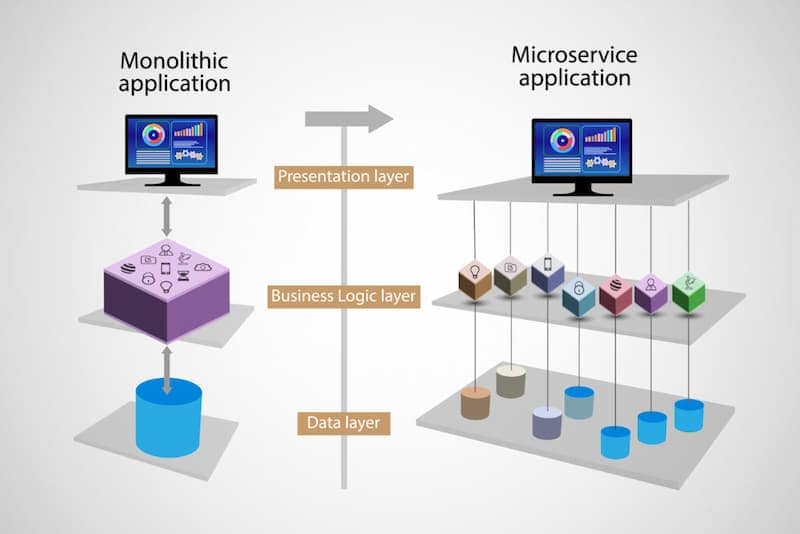In the world of software development, the ability to create scalable and flexible applications is crucial to adapt to rapid changes in user requirements and market demands. One architecture that has gained popularity in recent years is microservices. In this article, we will explore what microservices are and how they can help you build scalable and flexible software.
Microservices are a software architecture in which an application is broken down into small, independent services called microservices that run autonomously and communicate with each other through lightweight mechanisms such as Application Programming Interfaces (APIs). Each microservice focuses on performing a specific task and can be developed, tested, deployed, and scaled independently. This architecture contrasts with the traditional monolithic approach where the entire application is developed and deployed as a single entity.
One of the key advantages of microservices is their ability to scale efficiently. By breaking an application into independent services, each of them can scale vertically or horizontally as needed. This means that if a particular microservice is experiencing high demand, you can increase its processing capacity without affecting other components of the system. Furthermore, this granular scalability allows you to optimize resources and minimize costs by scaling only the microservices that truly need it.

Another major advantage of microservices is their flexibility. Being designed as individual components, microservices can be developed using different technologies and programming languages. This allows you to use the most suitable technology for each microservice, rather than being limited by the technological choice of the entire application. Additionally, because microservices are independent, you can update, deploy, or replace a microservice without affecting the rest of the application. This facilitates continuous deployment and adoption of agile development practices.
The microservices architecture also encourages modularity and code reuse. Each microservice focuses on a specific task and can be developed and maintained independently. This means that you can reuse existing microservices in different applications or flexibly combine them to create new functionalities. This modularity promotes collaboration between development teams and allows for greater agility as requirements change or new features are added.
However, the adoption of microservices also presents challenges. Managing communication between microservices can be complex, as it requires designing and implementing a proper networking infrastructure as well as service discovery mechanisms. Additionally, monitoring and debugging a microservices-based application can be more difficult, as it involves multiple running components.

To mitigate these challenges, it is essential to adopt proper design and development practices. Some recommendations include:
Each microservice should have a clearly defined responsibility and should not overlap with other functionalities.
Establishing clear and stable protocols between microservices facilitates communication and avoids compatibility issues in the future.
Ensuring that each microservice functions correctly independently and that the integration between them is smooth.
Having appropriate tools to monitor the performance and status of microservices helps identify and resolve issues more efficiently.
Microservices should be designed to handle failures in a resilient manner, allowing for quick recovery and avoiding error propagation throughout the application.
In summary, microservices are a software architecture that enables the creation of scalable and flexible applications. By breaking down an application into small, independent services, microservices offer the ability to scale efficiently and quickly adapt to changes. However, their adoption requires careful planning and design to address associated challenges. With careful implementation and proper practices, microservices can be a powerful tool for developing agile and modular software in the digital age.

We are a company that drives digital transformation with software solutions, mobile applications, AI, automation and customized IT services.
CONTACT USCopyright © 2013- Alpes Solutions LLC. All Rights Reserved